25 August, 1999
Aloha from Greenland, Our plane had some mechanical difficulties and we
have been authorized to return on the C-141 that will be leaving Thursday
morning and arriving at Mcguire Air force base near Philadelphia.
At breakfast we talked with our Canadian Pilot friend, Ken Burnam, who
has invited us to check out their operation. his flight had been delayed
because they were refitting the planes to carry fuel. When we arrive at
the hanger they were installing the fuel tanks inside the cargo bays. Ken
then took us into the cockpit of the planes. Many, I am sure have taken a
peak inside the cockpit of a jet and been amazed at the number of
instruments on the "dash board". The instruments repeat for each engine
the plane has. Since there were four engines on this parcticular plane,
there were four sets of all of the gauges. There are four seats in the
cockpit; one each for the pilot(left), copilot(right), engineer(between
them to the rear), and the navigator (a desk behind the engineer to the
side). I asked Ken if he still liked to fly as much as when he had started
and he said he always comments to the new pilots, .."and we get paid to
do this".
In the afternoon we met with two other pilots and took off to climb
Dundas Mountain. Dundas sits on a peninsula extending out from the base.
Around the area sits The Inuit village that was evacuated to Qaanaq
farther north when the base was built. Dundas is is a straight climb up
the side. Half way I froze. I kept thinking I would slide off the
seemingly vertical side because each step made the shale like rock
crumble under foot. I told the others to pass by me. Ken, the pilot, was
also a little taken aback and stayed behind. This helped, mainly because
the thought of a pilot being afraid of heights amused me, and I mustered
up my courage to scramble up. The last 25 feet or so,which can be seen
from the photos as a near 90 degree to the horizen, is scaled by using a
rope that is anchored to the top. At the top was an amazing view of the
Wolstenholme Fiord, Saunders Island, the base and out to sea. There were
bright green rocky areas painted by the soldiers for an annual golf
tournament held at the top. It would have taken all of my energy just to
climb, much less take some clubs and play at the top! We placed a stone on
top of a cairn that was built by those before us and started our descent.
I was anxious about the climb down, but it was actually easier mentally
although physically harder.
We wandered over to the village at the base and into the dugout sod
shelters built by the Inuit. Knud Rassmussen and Peter Freuchen had their
trading post in this area, but the original building has been removed to
Qaanaq. We returned to the base to find that our plane had landed and
that we would truly be leaving tomorrow, unless the weather turned. I am
very hopeful that we will be able to return next year with all of the
permits in place and be able to collect the fish to for our project. We
have been very fortunate to have so many people befriend us and to be able
to explore this little part of Greenland's beauty.
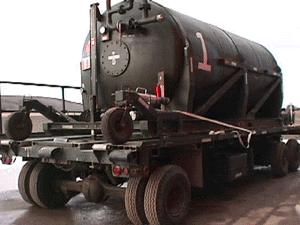
Fuel tank ready for loading.

Fuel tank moving into cargo bay.

The cockpit.
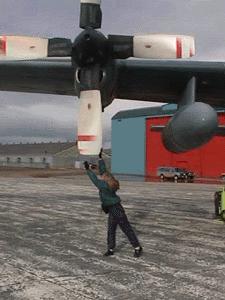
Me starting the plane?!
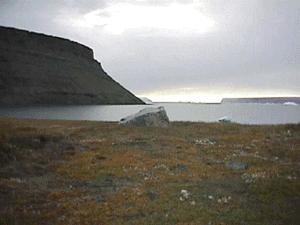
Profile of Dundas Mountain. Note the angle of ascent.
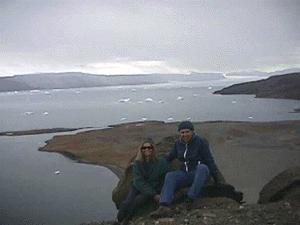
At the top. See the glaciers in Wolstenholme Fiord behind us.

View from the top: Dalrymple Rock is the small conical island.
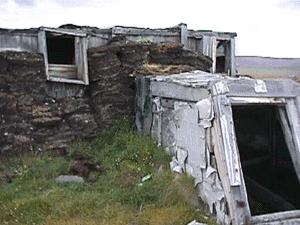
Inuit home. The wood is scavenged from wood brought by sailors years ago.

My favorite iceberg shot as we were leaving old Dundas Village.

My favorite iceberg shot as we were leaving old Dundas Village.

Contact the TEA in the field at
.
If you cannot connect through your browser, copy the
TEA's e-mail address in the "To:" line of
your favorite e-mail package.
|
